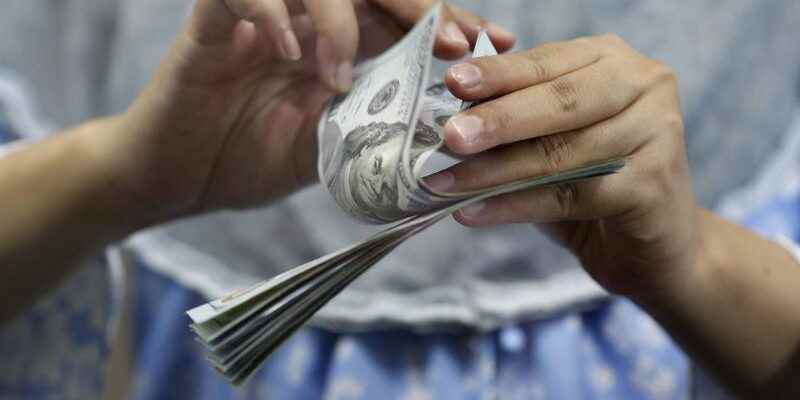Soaring U.S. interest rates, a relatively strong U.S. economy, and demand for a safe haven from wild swings in asset prices drew investors to the dollar, pushing it up about 22% against a basket of currencies last year.
Some investors are concerned that the dollar market has become overly crowded, increasing the risk of a sharp sell-off if the case for holding the currency changes and investors try to exit their positions in same time.
“Positioning is cluttered,” said Calvin Tse, head of global macro strategy, Americas, at BNP Paribas. “If we have a catalyst, the dollar can turn around, and turn around very aggressively,” he added.
Speculators in the international money market had a net long position in US dollars of $10.23 billion for the week ended September 20. The figure is lower than the recent high of nearly $20 billion reached in July, but it is the third longest streak of bullish positions in the greenback since 1999, with 62 consecutive weeks of long positions.
Barring a brief period of heightened pandemic-related uncertainty, data on options net positioning dating back to 2014 shows that long US dollar positions are the most stretched of all time, according to Morgan Stanley.
Some 56% of respondents to BofA’s Global Survey of Fund Managers in September named the long dollar position as the “most crowded trade”, the third consecutive month the greenback has held this position in the market. investigation.
Investors may have already had a taste of what a trend reversal might look like when the Dollar Index fell almost 3% in the space of two weeks, starting in mid-July, while some Investors were betting that US inflation might be subdued enough to allow the Fed to deviate from its path of aggressive interest rate hikes.
Although a stronger-than-expected US inflation report in August dashed those hopes and pushed the dollar higher, the dangers stemming from the bonded dollar trade have only grown, investors say.
“Undoubtedly, when you have a jump trade, where you have investors who are all looking for the same thing, when perceptions change, the reaction is violent,” said Eric Leve, chief investment officer of the wealth management firm. Bailard investment.
“We could easily see a 10% 15% move the other way in the dollar against the euro or the yen,” he said.
In 2015 and 2009, the last two instances where the Dollar Index rose more than 20% over a one-year period, the index then recorded a two-month decline of 6.7% and 7.7%, respectively, once the greenback has peaked.
ROLLOVER CATALYST
While jump positioning may worsen any potential reversal for the dollar, it would take a big fundamental shift to cause that reversal, investors say.
Lower volatility in US interest rates, normalization of energy prices in Europe, and China’s abandonment of its zero-COVID policy are three preconditions for the dollar to enter a structural bear market, said BNP’s Mr. Tse.
“When those three conditions are met, we’ll have a better chance of seeing the dollar enter a bear market, but I don’t think that’s happening anytime soon,” he said.
While US interest rates are higher than many other economies, nearly all major central banks, including the European Central Bank and the Bank of England, have raised rates as part of their fight against inflation. raised, thus helping to strengthen the attractiveness of their battered currencies.
Any sign that US inflation might ease could help revive expectations of a dovish pivot from the Fed, depriving the greenback of a crucial driving force.
A serious blow to the US economic outlook could also hurt the dollar, said Jack McIntyre, portfolio manager at Brandywine Global.
Aggressive policy tightening by the Fed has revived concerns that the US economy could be heading into recession next year.
The world’s three largest economies – the United States, China and the Eurozone – have experienced a sharp slowdown, and even a “moderate blow to the global economy over the next year could tip it into a tailspin.” recession,” the World Bank said in a recent study.
“I think what’s weakening the dollar is the growing likelihood of the United States going into recession, and that’s not discounted in the dollar,” McIntyre said.
But with the dollar hitting new multi-decade highs, positioning yourself for a pullback can be painful. “We struggled a bit, but it’s tough,” McIntyre said.
